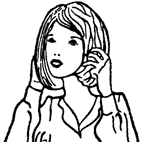 There’s a difference between the process and the piece. Even when the two are conflated in practice, a conceptual distinction is made by the artist to allow both to coexist on their relative merits. Sometimes, however, the former is mistakenly assumed to be the same as the latter: this happens too often when musicians improvise together and err on the side of leniency when judging whether the outcomes should be published, to say that “good enough” is the same as “good”. This solipsism is a cultural marker of the anxiety over music’s status vis-à-vis art. The collaboration between Michiko Ogawa and Lucy Railton on their album fragments of reincarnation exemplifies the two composer/performers’ advanced understanding of these ideas and aversion to self-indulgence. It’s a single piece, 45 minutes long, based on a first-take improvisation with Ogawa on shō and Railton on cello. There’s a solid structure underlying their performance, taking the shō’s tuning as the foundation to build a piece out of pitches from a chord cycle used in traditional Gagaku. All perfectly pleasant so far, but what lifts it into something much stronger is that Ogawa then went and dubbed in a part for Hammond organ. The organ blends with the two other instruments in an insidious way, its mellow tone complementing the thin reeds of the shō and the variability of the cello, yet weaving in and out of the duet as never quite foreground, nor background. (Being old and a bit wonky, the organ has a fallibility in tone to match the human element in the acoustic instruments.) Each voice reinforces the others while always maintaining its own distinct character, with the relationship between them made more complex by the small incompatabilities in pitch, the shō’s Pythagorean tuning at odds with the organ’s modern equal temperament. The cello, of course, has greater flexibility even as it leans towards the shō’s intonation, but even there Ogawa and Railton observed moments of overlap and incongruence and worked it into the cyclic structure of the piece; the organ’s role thus phases between thickening and resolving these differences. It all lands on the ear simply enough, but as it does so it opens up new spaces for listening into moments that cannot be easily explained. That’s the difference between working on your craft and working up a piece to show for it.
There’s a difference between the process and the piece. Even when the two are conflated in practice, a conceptual distinction is made by the artist to allow both to coexist on their relative merits. Sometimes, however, the former is mistakenly assumed to be the same as the latter: this happens too often when musicians improvise together and err on the side of leniency when judging whether the outcomes should be published, to say that “good enough” is the same as “good”. This solipsism is a cultural marker of the anxiety over music’s status vis-à-vis art. The collaboration between Michiko Ogawa and Lucy Railton on their album fragments of reincarnation exemplifies the two composer/performers’ advanced understanding of these ideas and aversion to self-indulgence. It’s a single piece, 45 minutes long, based on a first-take improvisation with Ogawa on shō and Railton on cello. There’s a solid structure underlying their performance, taking the shō’s tuning as the foundation to build a piece out of pitches from a chord cycle used in traditional Gagaku. All perfectly pleasant so far, but what lifts it into something much stronger is that Ogawa then went and dubbed in a part for Hammond organ. The organ blends with the two other instruments in an insidious way, its mellow tone complementing the thin reeds of the shō and the variability of the cello, yet weaving in and out of the duet as never quite foreground, nor background. (Being old and a bit wonky, the organ has a fallibility in tone to match the human element in the acoustic instruments.) Each voice reinforces the others while always maintaining its own distinct character, with the relationship between them made more complex by the small incompatabilities in pitch, the shō’s Pythagorean tuning at odds with the organ’s modern equal temperament. The cello, of course, has greater flexibility even as it leans towards the shō’s intonation, but even there Ogawa and Railton observed moments of overlap and incongruence and worked it into the cyclic structure of the piece; the organ’s role thus phases between thickening and resolving these differences. It all lands on the ear simply enough, but as it does so it opens up new spaces for listening into moments that cannot be easily explained. That’s the difference between working on your craft and working up a piece to show for it.
